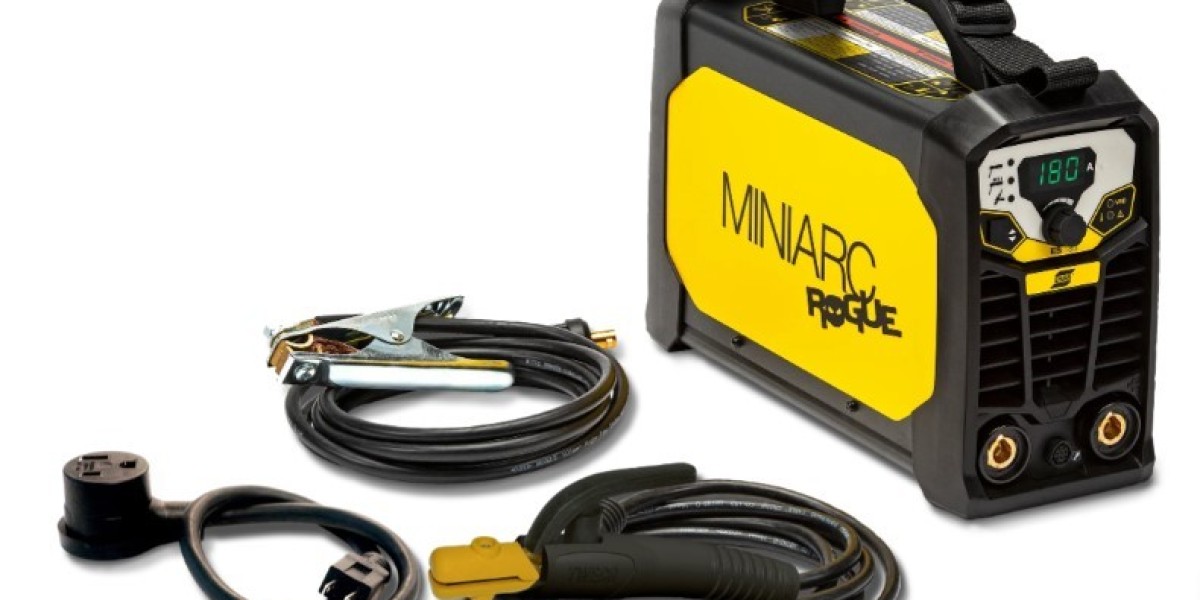Stick welding, also known as Shielded Metal Arc Welding (SMAW), is a popular and versatile welding technique. It is commonly used for construction, fabrication, and repair projects due to its simplicity and ability to work in various conditions. If you are new to stick welding, this guide will walk you through the essential steps of the stick welding process. Whether you're using a stick welder in your garage or considering investing in a portable stick welder, this article will help you understand the basics.
What is Stick Welding?
Stick welding is a type of arc welding that uses an electric current to melt and join metals. This method involves a stick welding machine that generates the current and an electrode coated with flux. When the electrode comes into contact with the workpiece, it creates an arc that produces the necessary heat to melt the metal. The flux coating on the electrode releases gases to shield the molten weld from contamination. This process is highly effective for welding in outdoor environments, as it can handle dirt, rust, and even windy conditions. Stick welding is widely used in industries due to its cost-effectiveness and reliability.
Choosing the Right Stick Welding Equipment
Selecting a Stick Welder
When starting, choosing the right stick welder is crucial. A portable stick welder is an excellent option for beginners because it is lightweight, easy to handle, and can be transported to different job sites. Stick welders for sale often come with various features, so it's essential to consider factors like amperage range and compatibility with the type of metals you'll be welding. A stick welding machine designed for beginners typically has straightforward controls and is ideal for small to medium-sized projects. Look for a model with clear instructions to make your learning experience smoother.
Essential Safety Gear
Safety should be your top priority when working with a stick welder. Invest in a good-quality stick-welding helmet to protect your eyes and face from sparks and harmful UV radiation. Choose a helmet with an auto-darkening feature, as it will automatically adjust the lens's shade to match the brightness of the welding arc. In addition to a stick welding helmet, wear fire-resistant gloves, a welding jacket, and sturdy boots. Make sure your work area is well-ventilated to minimize exposure to harmful fumes.
Setting Up Your Stick Welding Machine
Preparing the Workspace
Before beginning the stick welding process, ensure your workspace is clean and organized. Remove any flammable materials and set up a fire extinguisher nearby for safety. A sturdy workbench or table with a clamp to secure the workpiece is essential. Position your stick welding machine in a stable and dry location. Ensure the machine is properly grounded to prevent electrical hazards. If you're using a portable stick welder, ensure it's securely placed and has adequate ventilation.
Assembling the Equipment
Connect the electrode holder and ground clamp to the stick welding machine. The electrode holder holds the stick electrode, while the ground clamp completes the electrical circuit. Set the machine's amperage according to the electrode size and material thickness. Beginners should start with a lower amperage and gradually increase it as needed. Select the right electrode for your project. Common electrodes include E6010 and E7018, each suited for specific applications. Consult the stick welding machine manual for guidance on electrode selection.
The Stick Welding Process
Striking the Arc
To begin welding, hold the electrode at a slight angle to the workpiece and gently tap it against the metal to create an arc. This step requires practice, as maintaining a stable arc is critical for a clean weld. If the arc breaks, reposition the electrode and restart. Keep a consistent arc length, approximately the same as the electrode diameter. A steady hand and focus are essential to prevent excessive spatter or poor fusion.
Running the Bead
Once the arc is established, move the electrode along the joint at a steady speed to create a weld bead. Use a slight weaving motion for wider joints or to achieve better penetration. Monitor the molten pool and adjust your movement to ensure even distribution. Maintain a proper travel speed to avoid defects like undercutting or porosity. Beginners should practice using scrap metal to build confidence and improve their technique.
Common Challenges and Solutions
Dealing with Welding Defects
Stick welding can sometimes result in defects such as cracks, slag inclusions, or uneven welds. To avoid these issues, clean the workpiece thoroughly before welding and ensure proper electrode storage to prevent moisture absorption. Adjust the stick welder's settings if you encounter problems like excessive spatter or weak welds. Experiment with different amperage levels to find the optimal range for your material and electrode.
Improving Technique
Stick welding requires patience and practice to master. Focus on controlling the arc length, travel speed, and electrode angle. Watch videos or take beginner-friendly courses to gain additional insights into the stick welding process.
Maintaining Your Stick Welding Equipment
Cleaning and Storage
After completing your welding project, clean your Stick welding machine and other tools to remove dirt and debris. Store electrodes in a dry and moisture-free environment to prevent damage. A well-maintained stick welder will last longer and perform better over time.
Regular Inspections
Periodically inspect your equipment for wear and tear. Replace damaged cables, clamps, or electrode holders to ensure safety and efficiency. Regular maintenance will help you avoid downtime during critical projects.
Conclusion
Stick welding is a valuable skill that opens up opportunities for various projects, from repairing farm equipment to building metal structures. By understanding the stick welding process and investing in the right tools, such as a portable stick welder and a stick welding helmet, beginners can confidently start their welding journey. With consistent practice and attention to safety, you'll improve your technique and tackle more challenging projects. Stick welders for sale come in a range of options, so find one that suits your needs and get started on mastering this versatile welding method.



